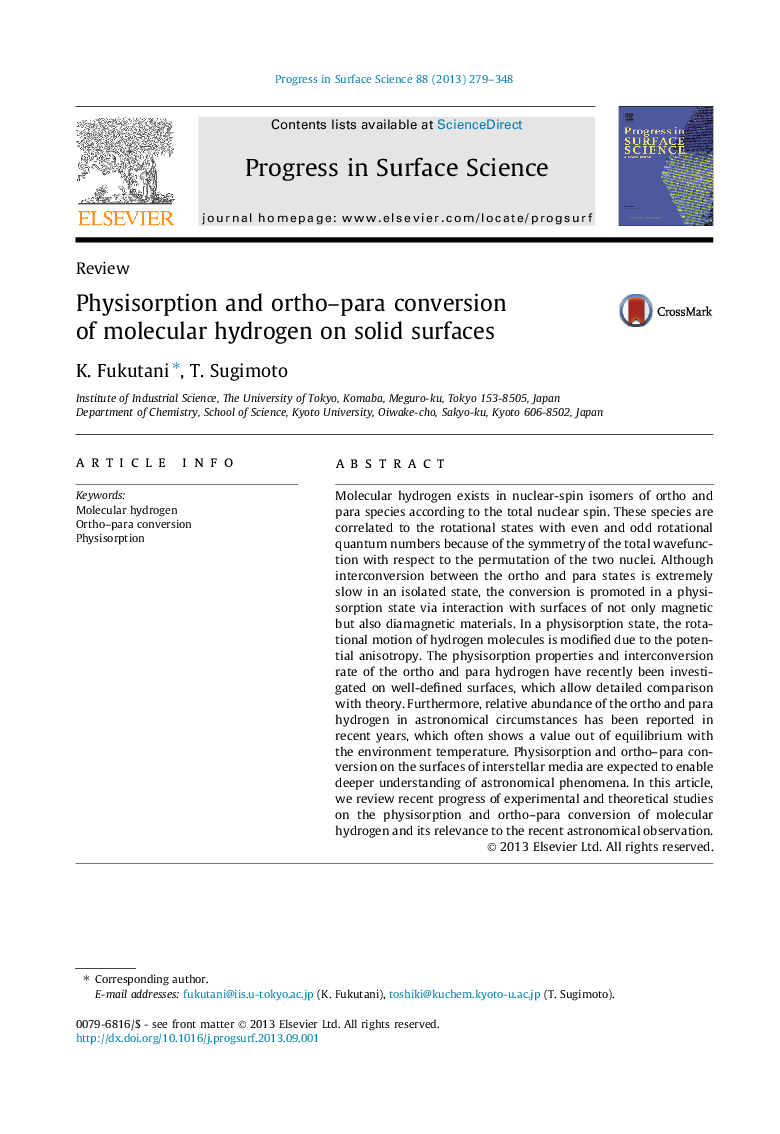| Article ID | Journal | Published Year | Pages | File Type |
|---|---|---|---|---|
| 5419950 | Progress in Surface Science | 2013 | 70 Pages |
Abstract
Molecular hydrogen exists in nuclear-spin isomers of ortho and para species according to the total nuclear spin. These species are correlated to the rotational states with even and odd rotational quantum numbers because of the symmetry of the total wavefunction with respect to the permutation of the two nuclei. Although interconversion between the ortho and para states is extremely slow in an isolated state, the conversion is promoted in a physisorption state via interaction with surfaces of not only magnetic but also diamagnetic materials. In a physisorption state, the rotational motion of hydrogen molecules is modified due to the potential anisotropy. The physisorption properties and interconversion rate of the ortho and para hydrogen have recently been investigated on well-defined surfaces, which allow detailed comparison with theory. Furthermore, relative abundance of the ortho and para hydrogen in astronomical circumstances has been reported in recent years, which often shows a value out of equilibrium with the environment temperature. Physisorption and ortho-para conversion on the surfaces of interstellar media are expected to enable deeper understanding of astronomical phenomena. In this article, we review recent progress of experimental and theoretical studies on the physisorption and ortho-para conversion of molecular hydrogen and its relevance to the recent astronomical observation.
Keywords
Related Topics
Physical Sciences and Engineering
Chemistry
Physical and Theoretical Chemistry
Authors
K. Fukutani, T. Sugimoto,
